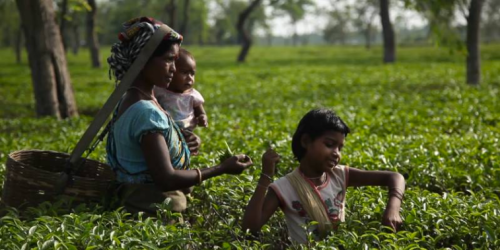
Despite India’s economic development in all sectors, growing poverty is a major problem with one-third of India’s population living below the poverty line. Poverty’s low standard of living, low income and lack of employment leave poor families with no choice but to employ their children instead of teaching them.
Children are not only the present but also the future of the country. The safer the children of a country are now, the brighter the future of that country will be. But the dreams that our great men had about the happy life of the children, those dreams are now just an idea and the problem of exploitation of children is taking a monstrous form. In India, which is on the path of development, millions of children are still struggling to get enough food, they are starving and this is very unfortunate. At an age when children have to carry a bag full of books to school, they are burdened with labour. Under the Child Labor Act, it is a crime to engage children below the age of 14 to perform hazardous and hazardous work in the country, yet the practice of engaging children in hazardous work continues unabated. Interestingly, there are more than 8.3 million child laborers in the country, between the ages of 5 and 14 years. The United Nations International Labor Organization defines child labor as that which deprives children of their childhood, their potential and their dignity, and is harmful to their physical and mental development. Child labor is prevalent in various occupations such as agriculture, construction, mining and domestic service.
Children are forced into child labor for various reasons. Migration, emergencies, non-availability of suitable work and poverty are identified as the most influencing factors. Moreover, children are under enormous pressure to support their families, as in most cases they have no other means of income. Due to child labour, children have to bear physical and mental trauma at an early age. These children who are victims of violence are prone to mental illnesses such as depression, guilt, anxiety, lack of confidence and hopelessness. Child labor is prevalent in India as well as in Africa, South America and even Europe. Bihar, Uttar Pradesh, Rajasthan, Madhya Pradesh and Maharashtra are the main states in India where child labor is high. These are the states where more than half of the total child labor population of the country work. Uttar Pradesh has the highest number of child labourers, with over 20 per cent of India’s child laborers residing in this state alone. Most of these child laborers work in the silk industry prevalent in the region. Children under the age of five work in factories for more than twelve hours a day, seven days a week.
Despite the continuous development of the country, poverty remains a major problem. One third of India’s population lives below the poverty line. Due to poor living conditions, low income and lack of employment, poor families have no choice but to employ their children instead of teaching them. Often these children are sold by their parents to child traffickers to ease financial pressure and earn extra money. Several laws have been enacted over the past few decades to deal with child labor in India. These laws include the Bonded Labor (Abolition) System Act, 1976 and the Child Labor (Prevention and Regulation) Amendment Bill, 2016. The Indian government has also set up committees and institutions like Gurupadaswamy’s to investigate child abuse. The Ministry of Labor and Employment has implemented several projects to rehabilitate child labor since the late 1980s. Non-Governmental Organizations (NGOs) such as Care India, Child Rights and You a Hand in Hand India have been formed to assist the government in its fight to end child labour. The harsh reality is that our society has accepted child labor as a social norm.
Remarkable progress towards poverty alleviation
Only when we as a society adopt a zero tolerance attitude towards this exploitative and reprehensible practice will we be able to end it. Saving these children is not the only solution. This requires a multi-pronged approach. Anti-child labor laws should be enforced more strictly to prevent child labor and its exploitation in India. Also, addressing poverty and inequality is critical to eliminating child labor in India. Access to education is essential to break the vicious cycle of poverty and child labour. A country can take a new step of development only when its children are physically, mentally and educationally well-off. Child labour, child labor, child marriage, child prostitution etc. are some of the social evils, whose foundation is made up of illiteracy, poverty and unemployment prevalent in the society.
This problem can be curbed due to effective implementation of law and conscious active community mind
Vikas Parasram Meshram
[email protected]
















































